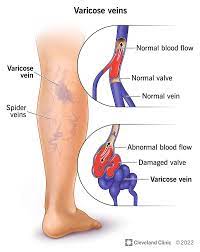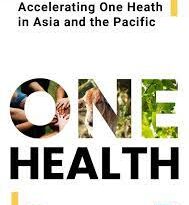What are the main causes of varicose veins?
Introduction to Varicose Veins
Are you tired of dealing with unsightly varicose veins that not only affect your appearance but also cause discomfort and pain? You’re not alone. Varicose veins are a common condition that affects many individuals, especially as they age or go through certain life stages like pregnancy. In this blog post, we will delve into the main causes of varicose veins, from genetic predisposition to lifestyle factors, and explore ways to prevent and treat them effectively. Let’s uncover the secrets behind varicose veins together!
Risk Factors for Developing Varicose Veins
Varicose veins can be a common concern for many individuals, with several risk factors playing a role in their development. One significant factor is genetic predisposition, as family history can increase the likelihood of experiencing varicose veins.
As we age, our veins may weaken and lose elasticity, making them more prone to becoming varicose. Hormonal changes, especially in women during pregnancy or menopause, can also contribute to the development of these twisted and swollen veins.
Pregnancy itself is a known risk factor for varicose veins due to increased blood volume and pressure on the lower body. Additionally, obesity and leading a sedentary lifestyle can put added stress on the veins, potentially leading to varicosities.
Certain occupations that require long periods of standing or sitting without much movement can exacerbate vein issues over time. Being aware of these risk factors is essential in taking preventive measures against developing varicose veins.
Genetic Predisposition
Have you ever wondered why some people seem more prone to developing varicose veins than others? Well, one significant factor that plays a role in the development of varicose veins is genetic predisposition.
Genes inherited from your parents can influence the strength and health of your vein walls and valves. If your family members have a history of varicose veins, you may be at a higher risk of developing them yourself.
Certain genetic factors can contribute to weakened vein walls or faulty valves, making it easier for blood to pool in the veins and lead to the formation of varicose veins. While genetics alone may not guarantee that you will develop varicose veins, they certainly play a part in determining your susceptibility.
Understanding your genetic predisposition towards varicose veins can help you take preventive measures early on and seek appropriate treatment if needed. So, next time you notice those swollen or twisted veins, remember that your genes might have something to do with it!
Aging and Hormonal Changes
As we age, our veins can weaken and lose elasticity, leading to the development of varicose veins. The natural wear and tear on our bodies over time can contribute to this condition. Hormonal changes in both menopause and hormonal therapy can also play a role in the formation of varicose veins.
Estrogen, progesterone, and testosterone fluctuations can impact vein health by causing blood vessels to dilate or become more susceptible to damage. Additionally, hormonal shifts during pregnancy may increase the risk of developing varicose veins due to increased blood volume and pressure on the lower body.
These changes disrupt normal blood flow patterns and put added stress on vein walls. Combined with factors like genetics or lifestyle choices, aging and hormonal changes can significantly influence the likelihood of developing varicose veins as we get older.
Stay tuned for tips on preventing varicose veins…
Pregnancy and Varicose Veins
Pregnancy can be a beautiful journey, but it also comes with its share of challenges, one of which is the increased risk of developing varicose veins. The hormonal changes and the pressure from the growing uterus can affect blood flow in your legs, leading to swollen and twisted veins.
As pregnancy progresses, the volume of blood in your body increases to support both you and your baby. This puts additional strain on your veins, especially those in the legs that have to work harder against gravity to pump blood back up to the heart.
The good news is that varicose veins caused by pregnancy often improve within a few months after giving birth. However, taking preventive measures during pregnancy can help alleviate discomfort. Staying active, elevating your legs when resting, avoiding crossing them for extended periods, and wearing compression stockings are some ways to manage varicose veins during this special time.
Remember that while varicose veins during pregnancy are common and usually temporary, it’s essential to consult with your healthcare provider if you experience severe pain or swelling in your legs.
Obesity and Sedentary Lifestyle
Obesity and a sedentary lifestyle are two significant factors that can contribute to the development of varicose veins. Carrying excess weight puts additional pressure on the veins in your legs, making it harder for them to efficiently circulate blood back to the heart. This increased pressure can cause the veins to become enlarged and twisted.
Furthermore, leading a sedentary lifestyle where you spend long hours sitting or standing without much movement can also impair proper blood flow. When we remain stationary for extended periods, our calf muscles don’t contract as frequently, which is essential for pumping blood upwards against gravity.
Moreover, being overweight often goes hand in hand with a lack of physical activity. Regular exercise not only helps maintain a healthy weight but also promotes better circulation throughout the body. By staying active and incorporating movements that engage your leg muscles, you can reduce your risk of developing varicose veins associated with obesity and a sedentary lifestyle.
Occupation and Varicose Veins
Occupation plays a significant role in the development of varicose veins. Jobs that require prolonged periods of standing or sitting can increase the risk of developing this condition. Those who work as nurses, teachers, retail workers, or factory employees are particularly susceptible to varicose veins due to the constant pressure on their legs.
The lack of movement and circulation in these situations can lead to blood pooling in the veins, causing them to become swollen and twisted over time. Additionally, occupations that involve heavy lifting or straining may also contribute to the formation of varicose veins by putting extra stress on the vascular system.
It’s essential for individuals with jobs that predispose them to varicose veins to take preventive measures such as taking short breaks to move around, wearing compression stockings, staying hydrated, and elevating their legs when possible. By being mindful of how their occupation impacts their vein health, individuals can reduce their risk of developing varicose veins.
How to Prevent Varicose Veins?
To prevent varicose veins, it’s essential to prioritize lifestyle changes that promote healthy circulation. Regular exercise plays a crucial role in keeping blood flowing efficiently throughout the body. Incorporating activities like walking, swimming, or cycling can help strengthen leg muscles and improve vein function.
Maintaining a healthy weight is also key in preventing varicose veins. Excess weight puts added pressure on the veins, making them work harder to pump blood back to the heart. A balanced diet rich in fiber and nutrients can support overall vascular health.
Avoiding prolonged periods of sitting or standing is important for reducing the risk of developing varicose veins. Taking breaks to stretch and move throughout the day can help alleviate pressure on the veins and improve circulation.
Wearing compression stockings can provide extra support for your veins by helping them return blood more effectively to the heart. These specially designed socks apply gentle pressure to aid blood flow and reduce swelling in the legs.
Incorporating these preventive measures into your daily routine can significantly lower your chances of developing varicose veins and promote long-term vascular health.
Treatment Options for Varicose Veins
When it comes to treating varicose veins, there are several options available depending on the severity of the condition. One common approach is lifestyle changes such as regular exercise and maintaining a healthy weight. These can help improve blood circulation and reduce pressure on the veins.
Compression stockings are often recommended to help support the veins and prevent blood from pooling. They work by applying gentle pressure to the legs, which helps push blood back towards the heart. In more severe cases, medical procedures like sclerotherapy or laser therapy may be necessary to close off affected veins.
Surgical interventions like vein stripping or endoscopic vein surgery are also options for some patients with extensive varicose veins. It’s essential to consult with a healthcare professional to determine the best course of treatment based on individual circumstances. Early intervention can help alleviate symptoms and prevent complications associated with varicose veins.
Conclusion
Varicose vein can be caused by a combination of factors such as genetics, age, hormonal changes, pregnancy, obesity, sedentary lifestyle, and certain occupations. While some risk factors like genetic predisposition cannot be changed, adopting a healthy lifestyle can help reduce the chances of developing varicose veins.
It’s essential to stay active, maintain a healthy weight, elevate your legs when sitting or lying down for extended periods of time and avoid crossing your legs while sitting. If you already have varicose veins or are at high risk for developing them due to the factors mentioned above, it’s crucial to consult with a healthcare professional for proper diagnosis and treatment options.
By being proactive in preventing and managing varicose veins through lifestyle modifications and medical interventions when necessary, individuals can improve their vascular health and overall quality of life. Remember that early intervention is key in effectively addressing this common condition.




